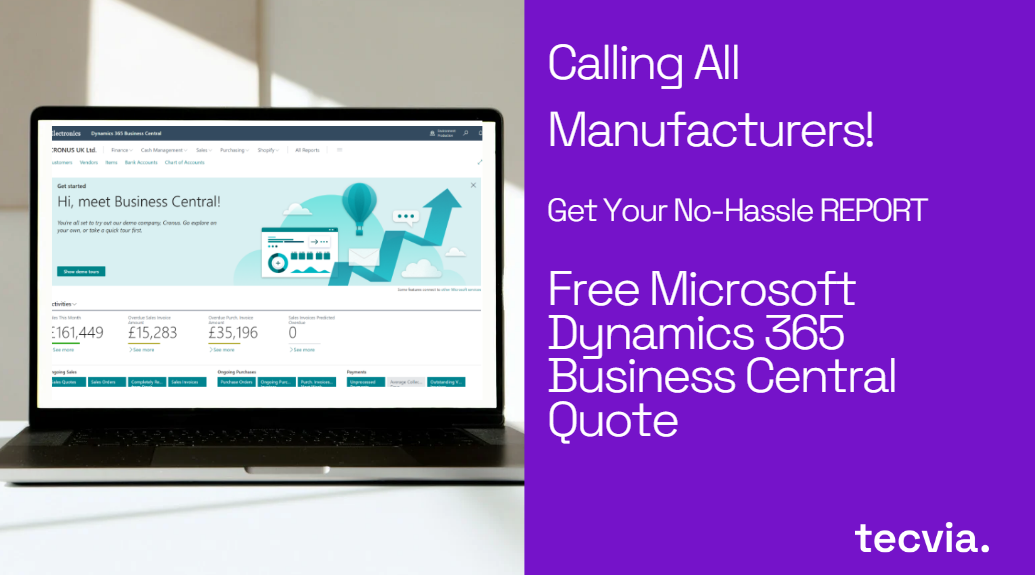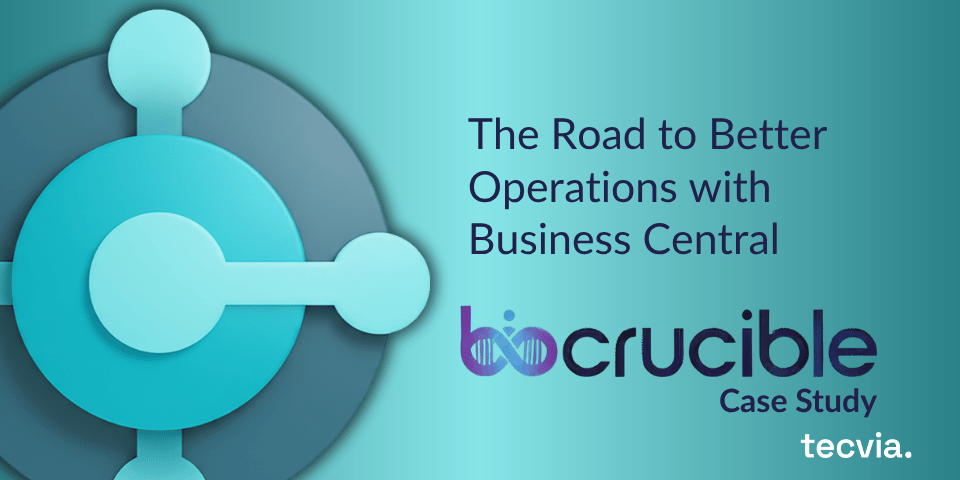As Microsoft phases out support for Dynamics NAV, upgrading to Dynamics 365 Business Central is a strategic move that can futureproof your organisation. This article explores the key benefits of this upgrade, the challenges involved, and the best practices to ensure a smooth transition.
End of Mainstream Support for Dynamics NAV
As of 2023, mainstream support for all versions of Microsoft Dynamics NAV ended. This means that these versions of Dynamics NAV will no longer receive feature enhancements or non-security updates from Microsoft. As a direct result, end users may need the maintenance and development of the solution from their existing support partners as the solution ages further. End users may need maintenance and development of the solution from their existing support partners as the solution ages further. End users may need the maintenance and development of the solution from their existing support partners as the solution ages further, and end users may need.
By 2028, Microsoft Dynamics NAV will also be phased out of extended support, potentially leading to additional challenges in general support and regulatory compliance. Extended support will vary depending on the level of service pack in place (consult your partner to understand if any service pack is in place) and, if eligible, offers a safety net for security updates; however, Microsoft will not accept any support requests for warranty issues, design changes or adding in new features.
| Dynamics NAV Version | When Does Mainstream Support End? | When Does Extended Support End? |
| Dynamics NAV 2013 | 01/09/2018 | 10/01/2023 |
| Dynamics NAV 2013 R2 | 01/09/2018 | 10/01/2023 |
| Dynamics NAV 2015 | 14/01/2020 | 14/01/2025 |
| Dynamics NAV 2016 | 13/04/2021 | 14/04/2026 |
| Dynamics NAV 2017 | 11/01/2022 | 11/01/2027 |
| Dynamics NAV 2018 | 10/01/2023 | 11/01/2028 |
Advantages of Dynamics 365 Business Central
-
- Advanced and Versatile: Microsoft Dynamics 365 Business Central is the natural successor to Dynamics NAV and replaced the solution in 2018. The solution is available in cloud and on-premises deployments, providing flexibility, scalability, and robust security. By choosing a cloud deployment, businesses can lower their operating costs and futureproof the business against future end-of-life solution situations.
-
- Seamless Integration and Customisation: Business Central integrates effortlessly with the broader Microsoft ecosystem solutions such as Microsoft 365, Outlook, PowerBi, Teams, etc. It is also enhanced further by various third-party apps and partners, enabling extensive customisation and extensions to meet specific business needs.
-
- Enhanced Reporting: The platform features built-in reports and dashboards for better visibility into financial data and performance metrics. It seamlessly integrates with PowerBi, allowing users to create interactive visualisations and detailed analytics. Additionally, Business Central incorporates AI-powered automations to boost productivity by streamlining workflows and minimising time spent on repetitive tasks.
-
- AI Capabilities: Microsoft Dynamics 365 Business Central leverages advanced AI capabilities to enhance business operations. It includes AI-powered automation streamlining workflows, reducing the time spent on repetitive tasks. The platform also offers predictive analytics, helping businesses forecast trends and make data-driven decisions. With AI-driven insights, users can optimise inventory management, improve customer service, and enhance financial forecasting, boosting productivity and efficiency.
-
- Security: Microsoft Dynamics 365 Business Central prioritises security to protect your business data. It offers advanced security measures, including role-based access control, ensuring users only have access to the information they need. The platform also supports data encryption in transit and at rest, safeguarding sensitive information. Additionally, Business Central adheres to Microsoft’s Modern Lifecycle Policy, providing regular updates and security patches to keep the system resilient against emerging threats. With these robust security features, businesses can confidently manage their operations, knowing their data is secure.
-
- Futureproofing: Microsoft Dynamics 365 Business Central ensures your business remains futureproof through its regular wave updates. These updates, released biannually, introduce new features, enhancements, and improvements, keeping the platform aligned with the latest technological advancements and industry standards. In addition to these major updates, Business Central provides continuous updates throughout the year, including critical security patches, performance optimisations, and minor feature enhancements. This ensures the system remains robust, efficient, and secure, helping businesses stay competitive and adapt to changing market demands. With Business Central, you can confidently navigate the future, knowing your ERP solution is always up to date.
Upgrading From Microsoft Dynamics NAV to Microsoft 365 Business Central Key Considerations
When considering an upgrade from Dynamics NAV to Dynamics 365 Business Central, your current version usually dictates the upgrade options available.
-
- From NAV 2009 SP1 and R2: You must transition through NAV 2013 and 2015 before reaching the latest Business Central version.
-
- From Version 13 or Older: Upgrade to Business Central Spring 2019 (v14). Note that mainstream support for v14 ended in October 2023, so it should only be used as a step towards the latest version.
-
- From NAV 2015, 2016, 2017, or 2018: You can directly upgrade to the latest version of Business Central. This upgrade path is designed to be straightforward, ensuring you can take advantage of the latest features and improvements.
-
- Bespoke Versions of Dynamics Navision On-Premises: Regardless of any customisations you may have made to your current Dynamics NAV version. Maintain the option to move to Business Central online, though it adds extra consideration. However, data from tables with code customisations in Dynamics NAV cannot be transferred directly. This means you will need to handle these customisations separately by re-implementing them as extensions in Business Central or assessing the need for the customisations in Business Central altogether.
Upgrading From Microsoft Dynamics NAV to Microsoft Dynamics 365 Business Central Involves Several Key Steps
Phase 1 – Inspect
This is the project’s first phase, and here, it is key to fully understanding your business and all your upgrade requirements.
Discovery:
-
- Evaluate your current NAV setup, customisations, and data.
-
- Decide whether to upgrade to Business Central on-premises or move to the cloud with a technical upgrade or reimplementation.
Preparation:
-
- Ensure you have a complete backup of your NAV database.
-
- Remove any obsolete data and extensions.
Phase 2 – Design
Once Phase 1 has been completed, the design and build work will start.
Technical Upgrade:
-
- Set up the new Business Central environment.
-
- Upgrade NAV to Business Central 14. This is an intermediate step before moving to the latest version of Business Central.
-
- Transform any custom code and functionality into extensions compatible with Business Central.
-
- Once all design and build work has been completed, an end-to-end solution test should be performed to ensure the solution and team are in the right place to proceed.
Data Migration:
-
- Data Upgrade: Migrate your data from NAV to Business Central. This involves synchronising the tenant database and ensuring data integrity.
Phase 3 – Empower
This phase will commence with training. Here, a tailored training programme will be generated and delivered.
Training & Testing:
-
- Training: Business Central-focused training workshops and introductions to the Microsoft Learn platform.
-
- Testing: Thoroughly test the migrated data and functionality to ensure everything works as expected.
Phase 4 – Activate
In this phase, you will go live with the solution and receive the necessary go-live support.
Deployment:
-
- Go Live: After testing, deploy Business Central for all users.
Post-Upgrade Support:
-
- Monitoring: Keep an eye on the system for any issues.
-
- Support: Offer ongoing support to users and address any post-upgrade challenges.
Upgrading Microsoft Dynamics NAV to Microsoft Dynamics 365 Business Central
Upgrading Microsoft Dynamics NAV to Microsoft Business Central
Pros:
-
- Continuity: Existing processes and procedures remain unchanged, minimising disruption.
-
- Shorter Timeline: The upgrade process is quicker, especially for less complex systems.
-
- Historical Data: All historical data is retained within Business Central, ensuring the continuity of records.
-
- Cost-Effective: Typically, it is less expensive than a full reimplementation, as it leverages existing infrastructure and customisations.
Cons:
-
- Missed Optimisation Opportunities: Upgrading may not fully leverage new features and optimisations available in Business Central.
-
- Legacy Customisations: Existing customisations and outdated processes may carry over, potentially leading to inefficiencies.
-
- Complexity: Highly customised NAV systems can make the upgrade process more complex and prone to issues.
Re-implementing Microsoft Business Central Environment
Pros:
-
- Optimisation: Opportunity to redesign and optimise business processes, taking full advantage of Business Central’s capabilities.
-
- Modernisation: Implementing the latest best practices and eliminating outdated customisations.
-
- Scalability: Better scalability and flexibility, especially with cloud-based deployment.
-
- Clean Slate: Starting fresh can simplify the system and reduce technical debt.
Cons:
-
- Higher Initial Cost: Reimplementation can be more expensive due to the need for new infrastructure, training, and potential downtime.
-
- Longer Timeline: The process is more time-consuming, requiring thorough planning and execution.
-
- Data Migration: Historical data may need to be migrated manually, which can be complex and time-consuming.
-
- Learning Curve: Employees may need to adapt to new processes and systems, requiring additional training.
Conclusion
As Dynamics NAV approaches its end of support, businesses that rely on this legacy ERP solution face a critical decision. Upgrading to Dynamics 365 Business Central offers a compelling path forward, unlocking many benefits, from advanced features and seamless integration to enhanced security and scalability.
While upgrading can be complex, careful planning and execution can minimise disruptions and maximise the return on investment. By weighing the pros and cons of upgrading versus reimplementing, businesses can make informed decisions that align with their specific needs and long-term goals.
Ultimately, the decision to upgrade to Dynamics 365 Business Central is a strategic move that can position businesses for future growth and success in an increasingly competitive market.
Summary of the benefits of upgrading from Microsoft Dynamics NAV to Microsoft Dynamics 365 Business Central
-
- Enhanced User Experience: Business Central offers a modern, intuitive interface that improves user productivity and satisfaction.
-
- Cloud Capabilities: Seamless integration with Microsoft’s cloud services provides greater flexibility, scalability, and accessibility from anywhere.
-
- Regular Updates: Continuous updates ensure access to the latest features, security enhancements, and compliance standards without significant downtime.
-
- Advanced Analytics: Built-in AI and machine learning capabilities offer deeper insights and predictive analytics to drive better decision-making.
-
- Integration with Microsoft Ecosystem: Tight integration with other Microsoft products like Office 365, Power BI, and Azure enhances overall functionality and collaboration.
-
- Improved Performance: Optimised performance and faster processing times enhance operational efficiency.
-
- Customisation and Extensibility: Easier customisation and extending functionalities through apps and extensions available on AppSource.
-
- Cost Efficiency: Reduced infrastructure and maintenance costs due to cloud deployment, along with a subscription-based pricing model that can be more cost-effective.
-
- Entra Uptime Guarantees: Microsoft Entra ID guarantees 99.99% uptime, ensuring reliable access and minimal disruption to business operations.
-
- Compliance Certifications: Business Central meets stringent compliance standards, including ISO 27001, ensuring robust data security and regulatory compliance.
Contact Us
For expert help and support within Dynamics 365 Business Central, reach out to Tecvia. We are a specialised service provider and offer comprehensive assistance tailored to your unique business needs.
Whether you’re just getting started with Dynamics 365 Business Central, require advanced customisation, or need troubleshooting for complex issues, we are a team of certified professionals equipped to provide efficient and effective solutions. Our in-depth knowledge ensures you receive accurate guidance and support.
Stay tuned for our next blog post!


